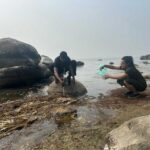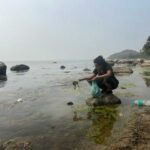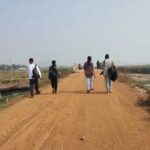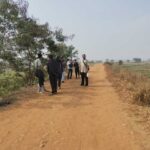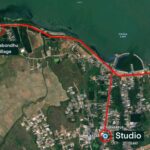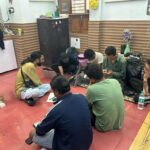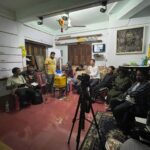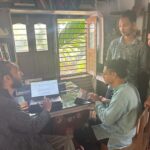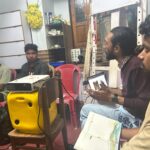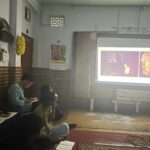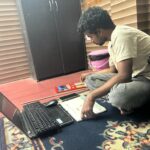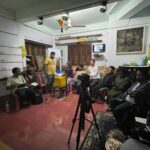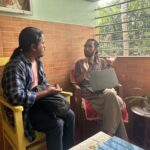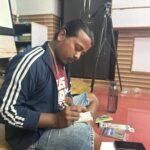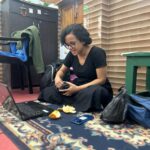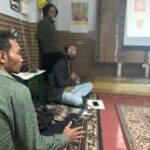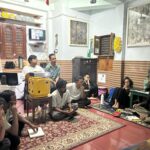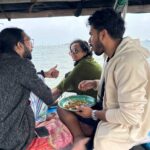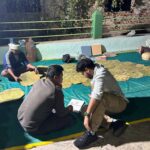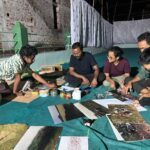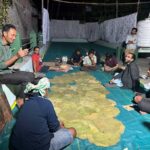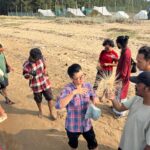
We, at the Shores of Serenity Project supported by Dot Line Space Art Foundation, are dedicated to engaging in a participatory residential project around Chilika (Balugoan), Khordha, Odisha, with a profound commitment to exploring the future of the biodiverse Chilka through a collective sustainability approach. At the initial level, we plan to collaborate with seven visual practitioners from the Eastern part and north-eastern region of India. Our vision is to develop a committed creative dialogue that seeks to explore and celebrate the diverse ecological landscapes around Chilika Lake in Odisha, one of the largest brackish water lagoons in Asia. This ambitious initiative aims to create a comprehensive visual representation of ecology, emphasizing the importance of environmental awareness, conservation, and the interconnectedness of ecosystems. The study focuses on understanding the effects of climate-induced changes on the ecosystem services of Chilika Lake in Odisha. We aspire to build a sustainable art model that not only encourages the future of India to reengage with deep ecological consciousness but also operates silently as a guardian advocating for ecological protection in the context of climate justice.
Catalyst: Debojit Rudrapaul(Tripura), Raja Boro(Assam), Saroj Kumar Badatya(Odisha), Sharmistha Bose(West-Bengal), Sheshadev Sagria(Odisha), Thomash Changmai(Assam), Yana Bage(Arunachal Pradesh) – Know more
Curatorial Negotiation by Kaur Chimuk | Curatorial Associates by Manjit Gogoi and Sitikantha Samantsinghar – Know more
Curatorial Perspective:
In this edition, curator Kaur Chimuk aims to highlight a participatory curatorial model that seeks to generate unfiltered, non-linear inquiries through creative intersections. Rather than mere construction, Kaur is intrigued by the prospect of rebuilding the missing links that have been overshadowed for years amidst urban chaos. This becomes a collaborative process where, in association with 7/8 practitioners, Kaur will engage in Reverse (knowledge) and Detext (narrative) aka R&D methodologies. On one hand, they will trace unseen ecological chronicles through their creative senses, allowing imagination to frame new narratives beyond post-colonial knowledge hierarchies. The goal is to initiate a collective dialogue involving the local community and practitioners, addressing the ongoing habitat loss. Optimistically, Kaur looks forward to fostering a synchronized exchange during the residency, providing an opportunity to delve into the intersection of artistic research, extending beyond mere production, and ecological inquiries.- Read more
For Support:
Dear Contributors, in this evolving initiative, we seek your full support for the research, development, and growth of the project. If you would like to join our collective journey, we warmly welcome you to become the patron of this curatorial ecology art residency program. With your support, we aim to acknowledge you as a title/associate sponsor and feature you or your organization alongside ours when we present the entire show at various venues at the end of 2024. Your involvement will be instrumental in the success of this endeavor. We hope you find strength in our aim and believe in our notion, We look forward to joining hands with you for the growth and glory of our notion!
Take a step with us and make a contribution, Your donation is of great value to keep the wheel spinning.
Supported by:
This edition is Supported by Ila Panda Centre for Arts and Hidden Area (Tracing A City & Meteor International Joint collaboration)
We are gradually gaining insights into the site, and here are some highlights from our first day. As we explored the sites and internally mapped subtle impressions collectively, our approach aimed to avoid enforcing linearity. From a curatorial perspective, this entire experience centered around the act of walking, transcending the mere definition of a verb—it became a conscious act. This has prompted me to reconsider the entire curatorial motivation, sparking curiosity to map the landscape beyond anthropocentrism. As we navigated through different patches, we observed sites revealing their internal dilemmas, a result of our singular approach. In the days ahead, I anticipate that these points of intersection will guide us, helping us connect with our motivation and shape the potential residue we intend to share with the community during the open day.
‘’..wondering if the synonym for ‘ecology’ is chaos. How do you pronounce ‘chaos’ in your mother tongue? Let’s share some time. I would like to begin the collective journey with the hope that we will allow our curiosity to explore new methodologies beyond the structure. I totally believe your pre-exercise will surely help you bring a constructive form in processes of interpersonal ecological dialogues. I am interested if we can approach our thought more from the trans-disciplinary methods where the epitome and ripple can survive in its own potencial. I am curious if we can decide on one domain that we can inquire collectively. I would like to share one area that keeps pushing me to think about the role of ourselves within the framework of anthropushing, hence the fish don’t exist! ‘’
Deep in Odisha, an art project explores the ripples of climate change on Chilika Lake’s vibrant ecosystem. Through diverse voices and perspectives, we’re exploring its complex ecology, not just through form, but by building a sustainable model that sparks lasting environmental awareness in future generations. This isn’t just about critical theory but its decolonial approach. it’s a conversation between creativity and nature, shaping how we see and interact with our world.
”…Our two days of conversation were more about tracing strength and deep ecology, allowing us to reshape our inner frames, wasn’t it? I’d like to hear your feelings—anything you’d like to share with us. Returning to my perspective on these two days of listening exercise—consider this not criticism but unplugging hesitations where the idea of cultural reproduction in the context of making is sometimes more prolific than expected.”
‘’Please Mind The Gap: or else you will be compelled to traverse the lonely narrative despite your consent,” is a phrase I found in my notebook, written for further conversation, and I feel it carries a certain depth. While we have decided to bring the linearity of studio practice, we’ve allowed field research as an essential toolkit, where inspiration comes not from text but from living experiences. It is not just a daybreak but extended inquiries where we choose a certain curatorial path. I guess the cautionary note about paying attention to the spaces and in-between points out contemporary practices where the void, rather than the gaps, is misunderstood or ignored! The method that I am trying to engage with you is more about questioning, so naturally, ignoring these gaps might lead us to an ambiguous journey through a solitary narrative, even if we don’t willingly choose it. Wondering if we can resolve this…’’

